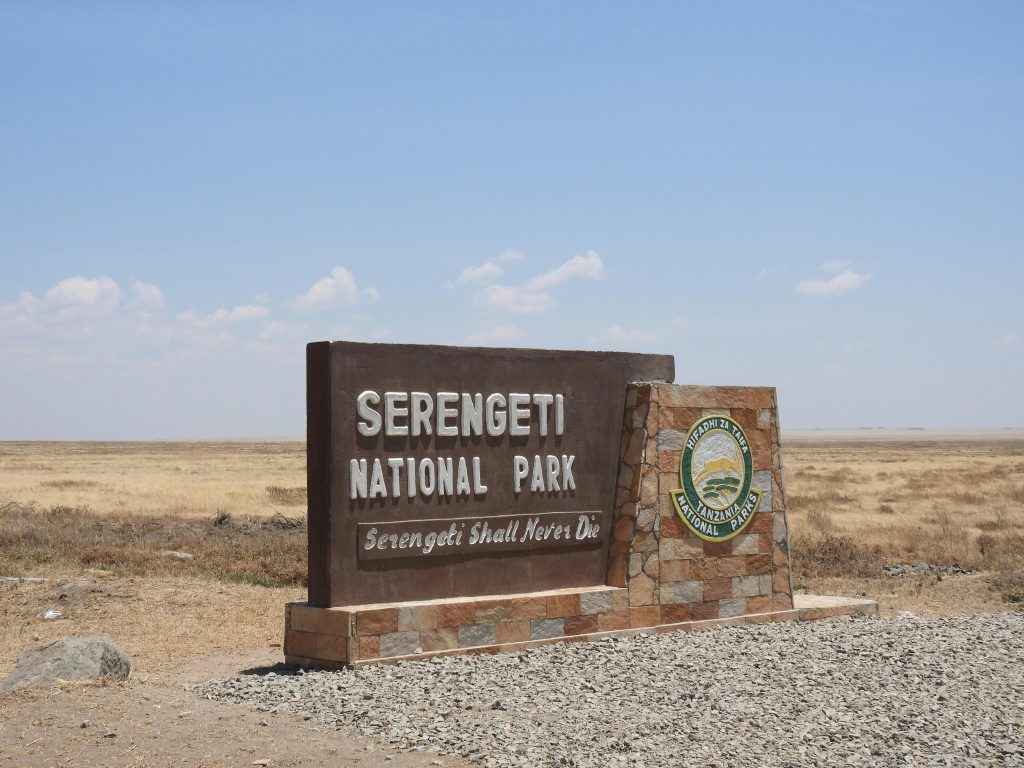
The Serengeti is not just a national park – it’s one of Earth’s last great wildlife sanctuaries and a living reminder of what the planet looked like before fences and cities. Located in northern Tanzania, this vast ecosystem stretches over 14,750 square kilometers of golden savannahs, acacia woodlands, and seasonal rivers. Its name, derived from the Maasai word Siringet, means “endless plains,” a fitting description for a land where the horizon seems to go on forever.
The Great Wildebeest Migration – Nature’s Greatest Spectacle
Every year, over 1.5 million wildebeest, joined by 250,000 zebras and hundreds of thousands of gazelles, take part in the world-famous Great Migration – a relentless cycle in search of fresh grazing.
From January to March, the herds gather in the southern Serengeti for calving season, when more than 8,000 young wildebeest are born each day. Predators such as lions, cheetahs, and hyenas take full advantage of this bounty, creating dramatic moments for safari-goers.
By June, the herds move north, facing their most dangerous challenge – the Mara River crossings – where crocodiles lie in wait beneath the muddy waters.

Wildlife Beyond the Migration
While the migration is the Serengeti’s headline act, the park offers extraordinary wildlife encounters year-round. It’s home to:
The Big Five lion, leopard, elephant, buffalo, and rhino.
Large cheetah populations on the open plains.
Over 500 bird species, from lilac-breasted rollers to secretary birds.
Hyenas, giraffes, warthogs, jackals, and countless antelope species.
Safari Experiences in the Serengeti
Your Serengeti adventure can be as rugged or as luxurious as you wish.
Game Drives: Morning and evening drives reveal predators on the hunt and grazers at rest.
Hot-Air Balloon Safaris: Float silently above the plains at sunrise, ending with a champagne breakfast in the bush.
Photographic Safaris: Guided by expert photographers who know the best angles and lighting.
Walking Safaris: Led by armed rangers, offering a close-up view of smaller wildlife and plants often missed in vehicles.
When to Visit
June to October: Best for dry season wildlife viewing and the river crossings.
January to March: Calving season in the south, with predator action at its peak.
November and May: Shoulder seasons – fewer crowds and beautiful green landscapes.
Where to Stay
Accommodation ranges from budget-friendly campsites to ultra-luxury tented lodges. Many camps move seasonally to follow the migration, ensuring you’re always in the action.
Popular choices include:
Kati Kati Tented Camp – Affordable and close to prime wildlife areas.
Four Seasons Safari Lodge – Luxury with a waterhole view.
Serengeti Under Canvas – A mobile tented camp that moves with the migration.
Why the Serengeti Should Be on Your Bucket List
The Serengeti offers more than a safari – it’s an immersion into one of the planet’s most vibrant and untouched ecosystems. Here, every sunrise brings a new story, every horizon hides a surprise, and every game drive is an unpredictable chapter in nature’s drama.
Travel Tip: Book your trip at least 6-12 months in advance, especially during migration season, to secure the best lodges and guides.

